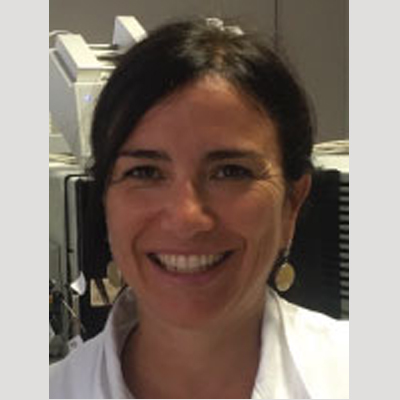Giuliana Cangemi
Chromatography and Mass Spectrometry Section, Central Laboratory of Analyses
IRCCS Istituto Giannina Gaslini, Genoa, Italy
This month we hear from Giuliana Cangemi, head of the Chromatography and Mass Spectrometry Section of the Central Laboratory of Analyses of the Giannina Gaslini Institute. The institute is a pediatric hospital with modest beginnings in the 1930s, but that is now a very large and very impressive teaching hospital. Providing a clinical service as well as undertaking research means that Giuliana and her colleagues work in a very integrated way that truly serves translational science. I loved reading that Giuliana considers teamwork as the most innovative part of what they do at the department! Read on!
Can you tell us a little bit about your respective roles?
I am the head of the Chromatography and Mass Spectrometry Section of the Central Laboratory of Analyses of the Giannina Gaslini Institute in Genoa, Italy. Gaslini Institute is a Children’s Hospital, born in 1931, that today is a modern polyclinic (20 pavilions across 73,000 square meters). Pediatric and surgical specialties are integrated in a research and teaching hospital of about 26,000 hospitalizations and 550,000 outpatient services and more than 400 international publications each year.
In the Central Laboratory I have many duties that are common to other biologists and doctors, mainly in the field of clinical chemistry with night and holiday cover for emergencies. My area of expertise is chromatography and mass spectrometry, in particular applied to therapeutic drug monitoring. I have the great opportunity to work in team with excellent clinicians that inform us of patients’ needs, and we set up laboratory tests to meet their requirements both using commercially available kits and developing new, in-house methods.
We are involved in clinical research field as support for pharmacokinetics in clinical studies, and we certified for this activity.
My team is composed of a research and development group with chemists, biologists and pharmacists and a production group with lab technicians. Research and assistance are truly integrated and translational research can really be performed from bench to bedside.
What is a typical day like for you?
I don’t have a “typical day” because some days I work in the laboratory alongside my collaborators, some days I am in my office dedicated to research activities, some days I am in the clinical chemistry laboratory supervising routine activity and some days I am at home because I’ m on night shift. I can say I don’t have a monotonous life!
Is there anything that your laboratory does, or that is done at your centre, that you would consider innovative?
The most innovative thing we do is being well organized! We care very much about the professionalism of our teamwork. Therapeutic drug monitoring in pediatrics is a complex job and we need different professionals to reach the goal of the personalization of therapies guaranteeing fast and robust results for many different questions!
What technological innovations have entered into use during your career that have permitted a change, or evolution, in practice?
Mass spectrometry was undoubtedly the turning point in my professional career. It widened our analytical possibilities both in the field of TDM and in that of catecholamines applied to the diagnostics of neuroblastoma which is another important area of interest of my group.
In our region we are the only laboratory to use mass spectrometry for the quantification of drugs for TDM, which allowed us to become the reference center in this field and we also receive samples from adult critical care patients from other hospitals.
How did you become interested in TDM?
It was my curiosity and the need to help clinicians in the personalization of therapies for our children and to support them in clinical studies that led me to deepen my interest in this special area of laboratory medicine, with the aim to offer our children the best cure with minimal risks.
Is there anything that you’ve seen or heard about recently and thought “I’d like to incorporate that idea at my center”?
Yes, we will soon introduce high resolution mass spectrometry in the clinical lab. We have experience with this technology for metabolomics and we will evaluate it for TDM. We are very interested in exploring the new paper spray technology that could help us improving our workflow for microsampling.
What sort of research do you have on the horizon that you think might influence clinical practice in the future?
We are working to implement microsampling, exploring new tools that could help us in remote sampling allowing patients to collect blood samples at home and to come as little as possible in the hospital, especially in the pandemic era.
What do you consider is the future for TDM? What are you excited about? What are the challenges we face?
Our big challenge is to face the spread of antimicrobial resistance and to help optimize the use of available drugs using a PK/PD approach. We will continue developing new laboratory methods for the measurement of antimicrobials in special matrices (such as sputum for cystic fibrosis patients or liquor in neonates) to help cure critical patients with the weapons we have – but using them at their best!
How has COVID-19 affected your professional life?
COVID-19 deeply modified the working life of laboratory operators, concentrating all resources in the management of the pandemic and molecular diagnostics. In the first part of the pandemic, I had to partially leave my business and devote myself to molecular diagnostics like everyone in the lab. Within a few days we went from customizing diagnostics to massive diagnostics. Fortunately, I was able to quickly return to TDM!
The content of the IATDMCT Blog does not necessarily have the endorsement of the Association.



